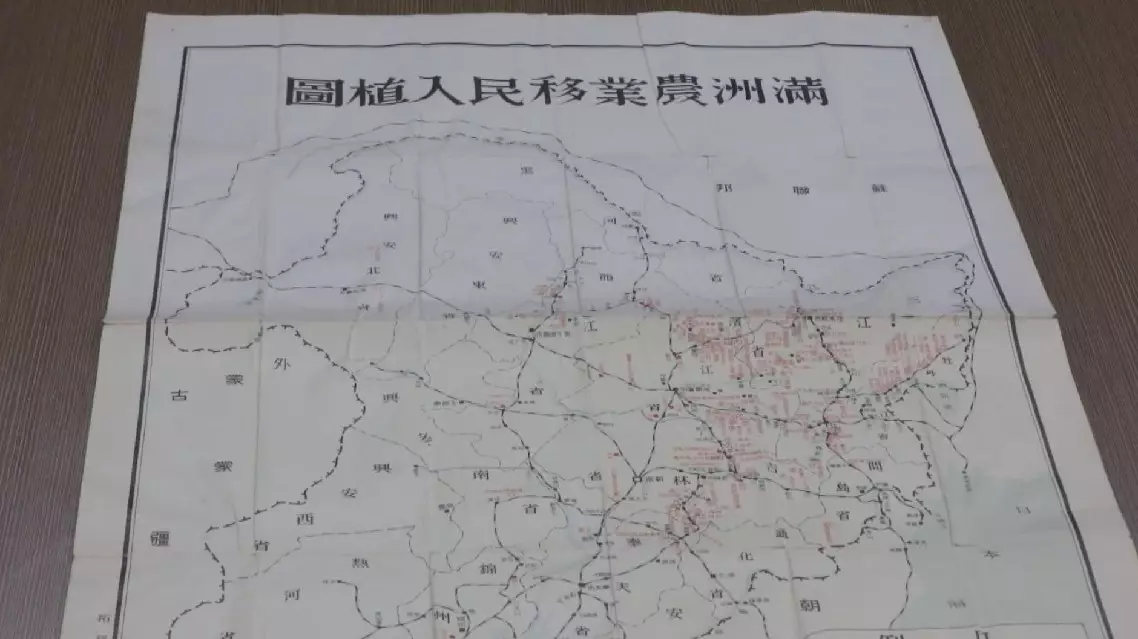The Memorial Hall of Northeast China Revolutionary Martyrs in Harbin, capital of northeast China's Heilongjiang Province, exhibited a national first-class cultural relic, the Manchuria Agricultural Immigration Map of the Japanese aggressors dated 1939, on the occasion of the 93rd anniversary of the September 18 Incident.
The document reveals the criminal acts of the Japanese aggressors in northeast China, formerly named Manchuria, reminding the Chinese people not to forget the history and national humiliation.
The map clearly records the planned and organized large-scale immigration after the Japanese occupation of China's northeast region. It is a rare physical document about Japan's invasion of China and its planned immigration, as well as a historical evidence of Japan's attempt to occupy northeast China for a long time.
"By way of immigration, they wanted to change the proportion of people in the northeast region, so as to achieve their purpose of complete and long-term occupation of China's northeast," said Liu Qiangmin, director of the memorial hall.
In February 1933, the first batch of armed immigrants from Japan, mainly veterans, settled in Yongfeng Town of Jiamusi City in Heilongjiang, setting up the first immigrant village in northeast China, called Mirong Village.
Then Japanese aggressors confiscated and seized the land of Chinese farmers in Heilongjiang, driving them out for five times by force.
In 1939, the Japanese invaders changed the name of "immigrant group" to "pioneer group" to cover up their true intentions. By 1945, more than 800 "pioneer groups" from Japan had forced their way into northeast China and seized more than 1.5 million hectares of farmland from local people.
In the 47 counties in Heilongjiang back then, there were 137,000 Japanese settlers who came to China in the guise of the "pioneer group".
"Each of the immigrant settlements on the map represents the miserable life of local Chinese residents who had been deprived of their land and forced to wander," said Liu.
After Japan surrendered in August 1945, most of the Japanese settlers were repatriated. The map has become an ironclad evidence of Japanese imperialist aggression against China, reminding Chinese people not to forget the national humiliation and to cherish peace.
The September 18 Incident marked the start of the Chinese People's War of Resistance against Japanese Aggression from 1931 to 1945. For years, China has kept marking the September 18 Incident.

Exhibition in Harbin with rare historical document proving facts of Japanese aggression of China









